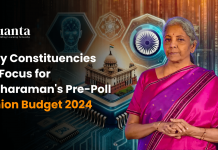What purpose does an NEP serve?
A NEP is a comprehensive framework to guide the development of education in the country. The need for a policy was first felt in 1964 when Congress MP Siddheshwar Prasad criticized the then government for lacking a vision and philosophy for education. The same year, a 17-member Education Commission,
headed by then UGC Chairperson D S Kothari, was constituted to draft a national and coordinated policy on education. Based on the suggestions of this Commission, Parliament passed the first education policy in 1968.
A new NEP usually comes along every few decades. India has had three to date. The first came in 1968 and the second in 1986, under Indira Gandhi and Rajiv Gandhi respectively; the NEP of 1986 was revised in 1992 when P V Narasimha Rao was Prime Minister. The third is the NEP released Wednesday under the Prime Ministership of Narendra Modi.
What are the key takeaways?
The NEP proposes sweeping changes including:
(a) opening up of Indian higher education to foreign universities,
(b) dismantling of the UGC and the All India Council for Technical Education (AICTE), (c) introduction of a four-year multidisciplinary undergraduate program with multiple exit options, (d) discontinuation of the M Phil program.
In school education, the policy focuses on overhauling the curriculum, “easier” Board exams, a reduction in the syllabus to retain “core essentials” and thrust on “experiential learning and critical thinking”.
In a significant shift from the 1986 policy, which pushed for a 10+2 structure of school education, the new NEP pitches for a “5+3+3+4” design corresponding to the age groups 3-8 years (foundational stage), 8-11 (preparatory), 11-14 (middle), and 14-18 (secondary).
This brings early childhood education (also known as pre-school education for children of ages 3 to 5) under the ambit of formal schooling.
The mid-day meal program will be extended to pre-school children.
The NEP says students until Class 5 should be taught in their mother tongue or regional language.
Students to gain greater exposure to vocational skills and Coding being taught from Class 6
The policy also proposes phasing out of all institutions offering single streams and that all universities and colleges must aim to become multidisciplinary by 2040.
The policy aims to achieve a 100 percent gross enrollment ratio (GER) in school education by 2030 and 50 percent GER in higher education by 2035. The emphasis on making higher education multidisciplinary and holistic by making the curriculum more flexible, creating of e-courses in regional languages, and adapting to times by advocating for increased use of technology are welcome reforms.
Notably, the policy commits to increasing public expenditure on education to 6 percent of the GDP from the current 4.43 percent(important shit)
How will these reforms be implemented?
The NEP only provides a broad direction and is not mandatory to follow. Since education is a concurrent subject (both the Centre and the state governments can make laws on it), the reforms proposed can only be implemented collaboratively by the Centre and the states. This will not
happen immediately. The incumbent government has set a target of 2040 to implement the entire policy.
Sufficient funding is also crucial; the 1968 NEP was hamstrung by a shortage of funds. The government plans to set up subject-wise committees with members from relevant ministries at both the central and state levels to develop implementation plans for each aspect of the NEP. The plans will list out actions to be taken by multiple bodies, including the HRD Ministry, state Education Departments, school Boards, NCERT, Central Advisory Board of Education and National Testing Agency, among others. Planning will be followed by a yearly joint review of progress against targets set.
What does the emphasis on mother tongue/regional language mean for English-medium schools?
Such emphasis is not new: Most government schools in the country are doing this already. As for private schools, it’s unlikely that they will be asked to change their medium of instruction. A senior ministry official clarified that the provision of mother tongue as a medium of instruction was not compulsory for states. “Education is a concurrent subject. This is why the policy clearly states that kids will be taught in their mother tongue or regional language ‘wherever possible’,” the officer said.
How does the government plan to open up higher education to foreign players? The document states universities from among the top 100 in the world will be able to set up campuses in India. While it doesn’t elaborate the parameters to define the top 100, the incumbent government may use the ‘QS World University Rankings’ as it has relied on these in the past while selecting universities for the ‘Institute of Eminence’ status.
However, none of this can start unless the HRD Ministry brings in a new law that includes details of how foreign universities will operate in India.
It is not clear if a new law would enthuse the best universities abroad to set up campuses in India. In 2013, at the time the UPA-II was trying to push a similar Bill, The Indian Express had reported that the top 20 global universities, including Yale, Cambridge, MIT and Stanford, University of Edinburgh and Bristol, had shown no interest in entering the Indian market.
Participation of foreign universities in India is currently limited to them entering into collaborative twinning programs, sharing faculty with partnering institutions, and offering distance education. Over 650 foreign education providers have such arrangements in India.
How will the four-year multidisciplinary bachelor’s program work?
Under the four-year program proposed in the new NEP, students can exit after one year with a certificate, after two years with a diploma, and after three years with a bachelor’s degree. “Four-year bachelor’s programs generally include a certain amount of research work and the student will get deeper knowledge in the subject he or she decides to major in.
After four years, a BA student should be able to enter a research degree program directly depending on how well he or she has performed… However, master’s degree programs will continue to function as they do, following which student may choose to carry on for a PhD program,” said scientist and former UGC chairman V S Chauhan.
What impact will doing away with the M Phil program have?
The government claims that this should not affect the higher education trajectory at all. “In normal course, after a master’s degree, a student can register for a Ph.D. program.
This is the current practice almost all over the world.
In most universities, including those in the UK (Oxford, Cambridge, and others), M Phil was a middle research degree between a master’s and a Ph.D. Those who have entered MPhil, more often than not ended their studies with a Ph.D. degree.
MPhil degrees have slowly been phased out in favor of a direct Ph.D. program.
Will the focus on multiple disciplines not dilute the character of single-stream institutions, such as IITs?
The IITs are already moving in that direction.
IIT-Delhi has a humanities department and set up a public policy department recently. IIT-Kharagpur has a School of Medical Science and Technology.
Asked about multiple disciplines, IIT-Delhi director V Ramgopal Rao said, “Some of the best universities in the US such as MIT have very strong humanities departments. Take the case of a civil engineer. Knowing how to build a dam is not going to solve a problem. He needs to know the environmental and social impact of building the dam. Many engineers are also becoming entrepreneurs. Should they not know something about economics? A lot more factors go into anything related to engineering today.”
Inclusive efforts for building equity
NEP 2020 has the gender inclusion fund for improving equity for the disadvantaged regions in our country.
The policy is going to be a great aid for SC [scheduled caste], ST [scheduled tribe], and other disadvantaged sections.
Thanks to the Special Education Zones setup for the backward regions. With Balika Vidhyalayas and tribal welfare pre-schools and, there’s going to be a lot of out-of-school girl children and those never enrolled in the mainstream.
The shortcomings of NEP 2020(everything earlier can be considered the positives)
To many, the NEP reform is considered as a boon to our entire gamut of education. To the other few, it carries some challenges visible in it. Here are some;
- The Policy talks about exits for children to drop out and re-enroll and at the same time initiates the Right To Education till class 12. The better way would be by removing the ‘exits’ as a normal way-out and making education a compulsory venture for students below 18.
- Leave alone the digital aid, most children are not provided access to basic education. How would these children, without basic aid suppose to study from ‘digital open schools’ on computers?
- Nothing is mentioned about how the digitalization of classrooms is going to take place.(no roadmap)
- Talking about the quality of education taught in schools, NEP has drafted out elaborate plans for shaping new teachers through Continuous Development Program (CDP), what would happen to the older teachers and their capacity building?
- No reference to sports and other physical activities including dance, karate, and yoga as a significant part of academics.(This sucks :/)
- It also does not resonate why the NEP 2020 has laid so much importance to making Sanskrit—which is not the most practical language to learn—widely available in school and higher education. Sanskrit is not an easy language to grasp, promoting it seems to be less for children’s development and more for the satisfaction of the RSS
Inadequate mention of Sex Education
The NEP seems to be avoiding the discussion over significant contemporary issues in the lives of children.
Not only does the word ‘sexuality’ find no mention in the document, ‘sex education’ has been subsumed under the component of “[e]thical and moral reasoning”. It is done with the intent to advance “[b]asic health and safety training, as a service to oneself and to those around us”.
It, moreover, sparingly envisions equipping students to make “future judgment surrounding consent, harassment, respect for women, safety, family planning, and STD prevention”.
To structure your CAT online preparation in an efficient way consider joining iQuanta which is a top online cat coaching institute and being a part of the iQuanta CAT 22 Course.
You can also check out and be a part of their Facebook group for peer learning, doubt solving and free material.
For 24*7 doubts-solving, FREE guidance and counselling and peer to peer learning, join the CAT preparation Fb group below:







